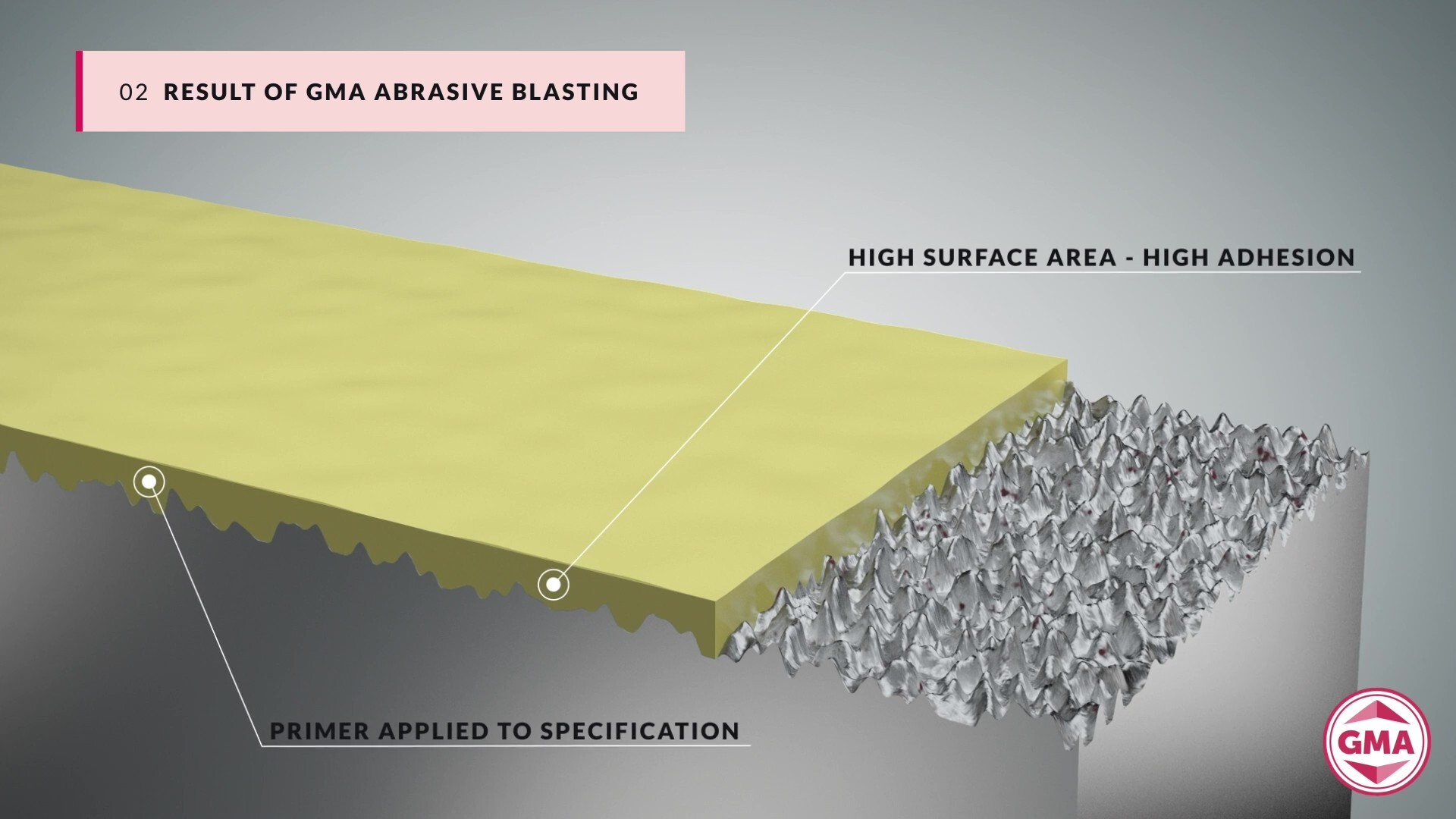You’re currently viewing the Americas website.
You’re currently viewing the Americas website.
Would you like to switch countries or language?Blast Abrasives
Topics
Waterjet Cutting
Topics
Resources
Categories
Types
Categories
Topics
Abrasive Blasting Tech Tips English Global
High Peak Density for Enhanced Coating Adhesion
The Importance of Peak Density in Coating Applications
The effectiveness of a coating system depends on the profile of the prepared surface. Peak density—the number of peaks per unit area—is a key factor that determines the adhesion strength of a coating. Higher peak density provides greater surface area for coatings to bond, improving adhesion and reducing the likelihood of coating failure.
Slag Abrasives: Challenges with Inconsistent Profiles
Blasting with slag abrasives often results in low peak density due to their irregular particle shapes and inconsistent performance. This creates several challenges:
- Inconsistent Surface Profile: Variability in profile leads to uneven coating thickness.
- Thicker Primer Coats: More material is required to cover the surface, increasing costs and labor.
- Risk of Delamination: Thick primer layers are prone to delamination, particularly in harsh environments.
GMA Garnet™: Delivering High Peak Density
GMA Garnet™ abrasives provide a consistent surface profile with high peak density, offering significant benefits:
- Uniform Adhesion: Consistent profiles allow primers to be applied within specified thickness ranges.
- Optimized Coating Performance: Higher peak density improves bonding strength, reducing the risk of coating delamination.
- Efficient Material Use: With a smoother, more uniform surface, less coating material is required, saving costs and reducing waste.
Topics
Abrasive Blasting
Tech Tips
English
Global
 GMA ToughBlast™
GMA ToughBlast™ GMA SpeedBlast™
GMA SpeedBlast™ GMA NewSteel™
GMA NewSteel™ Oil & Gas
Oil & Gas Industrial Fabrication & Maintenance
Industrial Fabrication & Maintenance Marine & Ship Building
Marine & Ship Building TruCost Blast Calculator
TruCost Blast Calculator Product Selector
Product Selector Brochure | GMA Garnet Blast Abrasives
Brochure | GMA Garnet Blast Abrasives News: GMA's Roadmap to Sustainability
News: GMA's Roadmap to Sustainability GMA ExcelCut
GMA ExcelCut GMA ProCut™
GMA ProCut™ GMA ClassicCut™
GMA ClassicCut™ Metal fabrication
Metal fabrication Glass cutting
Glass cutting Stone cutting
Stone cutting Case Study | GMA ClassicCut | Smith and Nephew
Case Study | GMA ClassicCut | Smith and Nephew Why is Garnet the preferred abrasive in Waterjet cutting?
Why is Garnet the preferred abrasive in Waterjet cutting? Water Filtration
Water Filtration Rubber Fillers
Rubber Fillers Anti-skid Products
Anti-skid Products Ilmenite Sand
Ilmenite Sand Pyroxene
Pyroxene Rutile
Rutile

